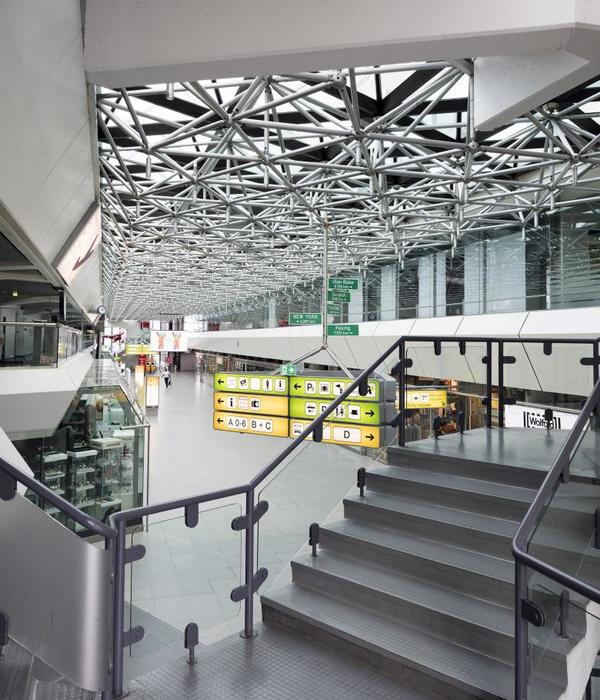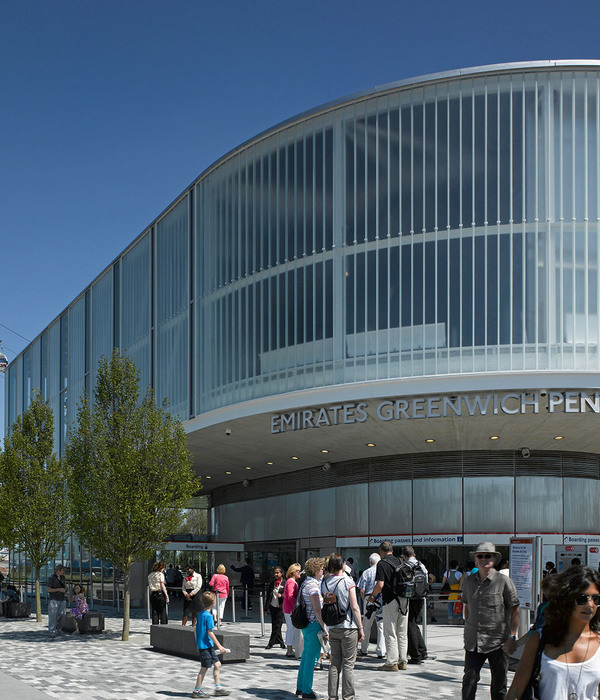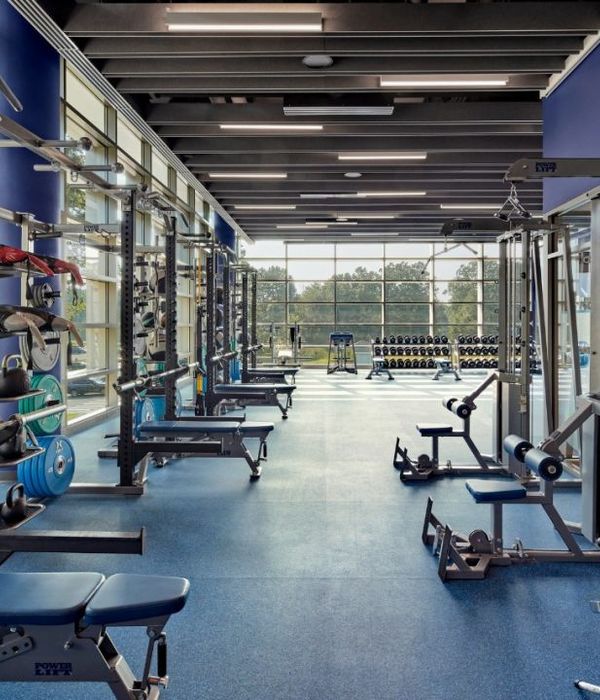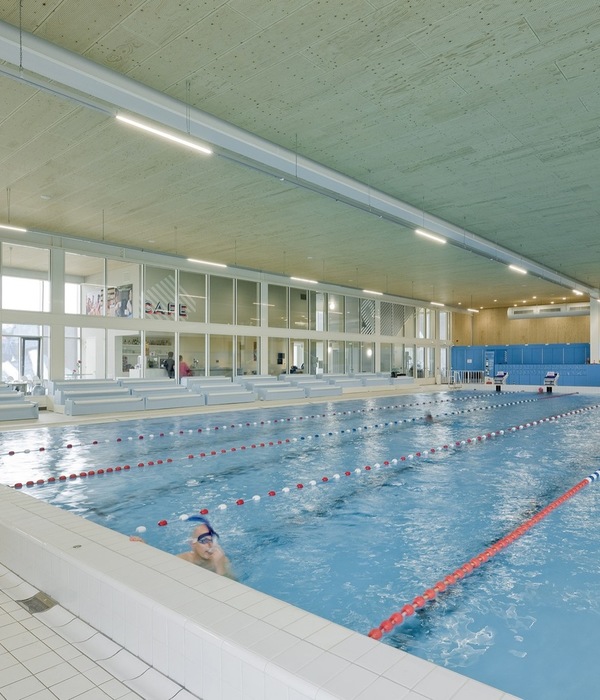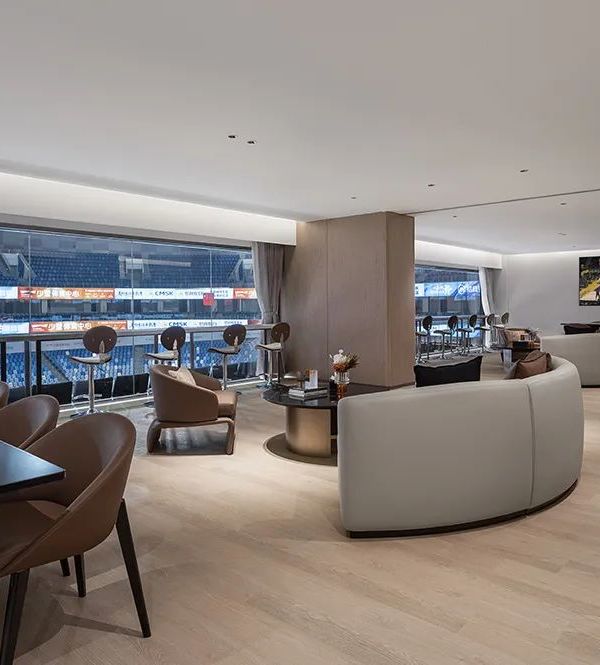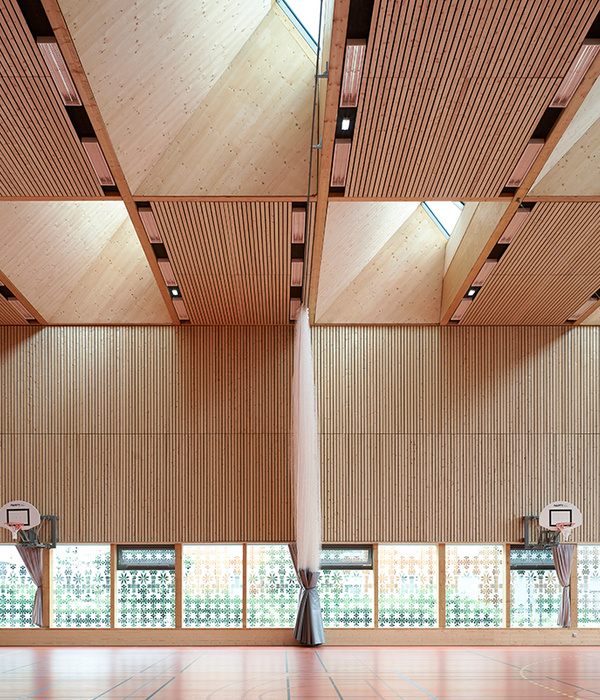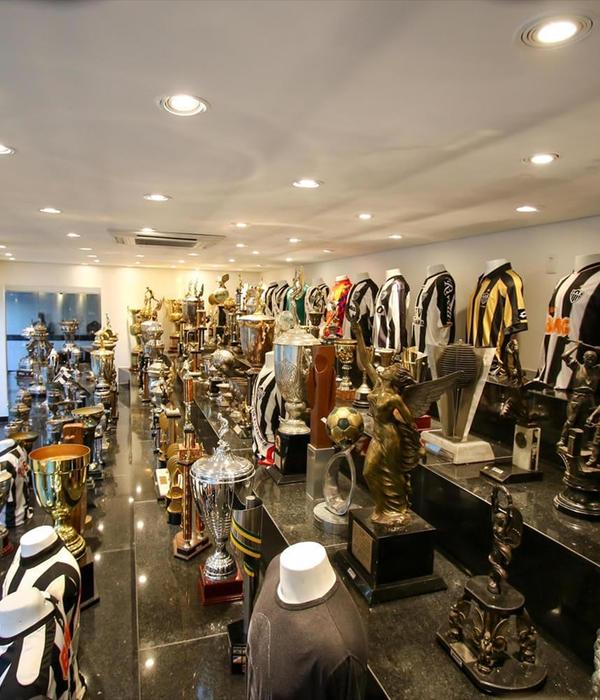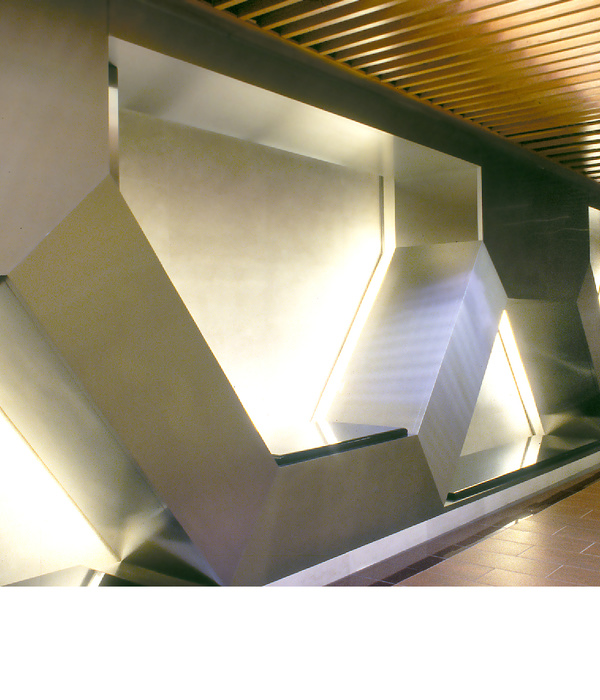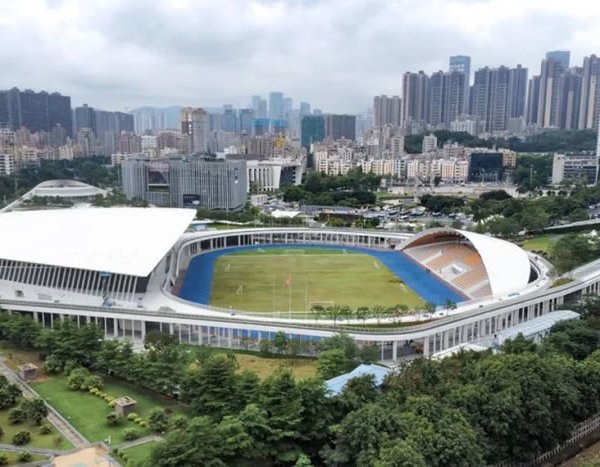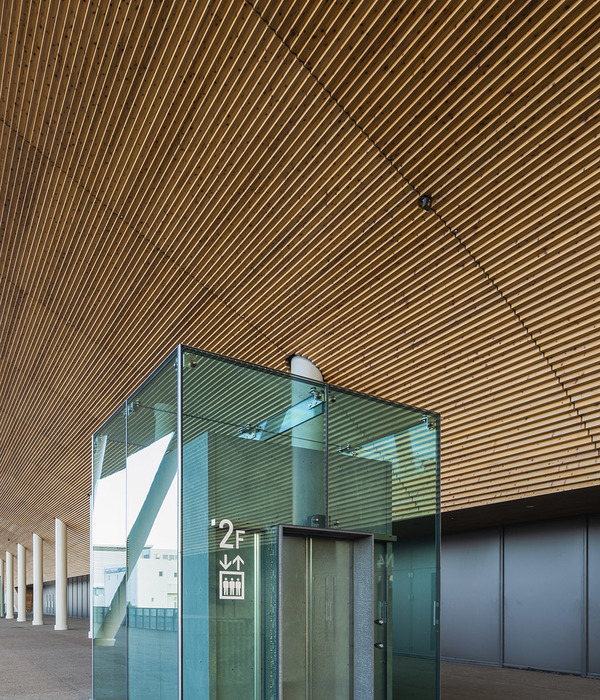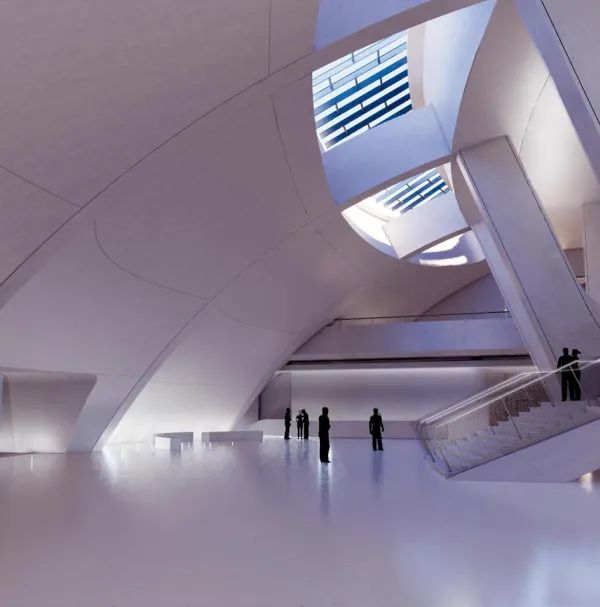架构师提供的文本描述。交易所位于Eero Saarinen(原Irwin Union Bank)的Irwin会议中心附近的广场内,并利用以前为直通银行出纳员提供服务的三个现有的檐篷。设计挑战是“激活”空间,同时将当代设计理念与历史建筑和现有遗址条件联系起来。(鼓掌)
Text description provided by the architects. The Exchange sits within the plaza adjacent to the Irwin Conference Center by Eero Saarinen (formerly the Irwin Union Bank) and makes use of the three existing canopies that formerly served the drive-through bank tellers. The design challenge was to “activate” the space while relating a contemporary design concept to the historic building and existing site conditions.
Courtesy of Oyler Wu Collaborative
吴奥勒合作
奥勒·吴对Eero Saarinen的作品进行了研究,并对该网站进行了分析,重点介绍了三个关键概念:将现有的檐篷统一成长方形,实体/空的关系,包括在整个方案中将实体元素“松散地”放置在雕刻的空隙中,以及使用实体和框架的对比构造策略。这一战略的意图是产生这样一种感觉,即展馆既是全新的,又是一直存在的。
Oyler Wu's research into Eero Saarinen's oeuvre, along with analysis of the site, led to a focus on three keys concepts: the unification of the existing canopies into a rectangular volume, solid/void relationships that include a "loose fit" placement of solid elements within carved voids throughout the scheme, and the use of contrasting tectonic strategies of solid and frame. The intention of this strategy is to produce the sense that the pavilion is simultaneously brand new and that it has always been there.
Courtesy of Oyler Wu Collaborative
吴奥勒合作
展馆通过完成三个檐篷隐含的几何图形来定义网站上的一个新的公共空间,这是欧文会议中心历史上作为一个被推动的银行所留下的遗产。展馆提供了一系列的孔隙,从半私人空间到仅由隐含体积的细微空间所定义的开放区域。展馆是由一个复杂的混合体墙和复杂的框架系统,蜿蜒通过体积。它是进一步搞活了复杂的构造相互作用的嵌入对象,从奥勒吴的特别兴趣线/体积关系。由此产生的复杂的架空元件、墙壁和长凳产生了新的围堵区域和新的目的地。
The pavilion defines a new public space on the site by completing the geometries implied by the three canopies, legacies of Irwin Conference Center’s history as a drive-up bank. The pavilion provides a range of porosities, from semi-private spaces to open areas defined only by the nuanced spatial containment of the implied volume. The pavilion is composed of a complex mixture of volumetric walls and systems of intricate framework that wind its way through the volume. It is further enlivened by a sophisticated tectonic interplay of embedded objects derived from Oyler Wu’s particular interest in line/volume relationships. The resulting complex of overhead elements, walls, and benches produce new areas of containment and new points of destination.
Courtesy of Oyler Wu Collaborative
吴奥勒合作
Courtesy of Oyler Wu Collaborative
吴奥勒合作
{{item.text_origin}}

